Equipment
The chair for multimedia communication and signal processing owns a large number of specialized rooms and equipment, to record, process and display visual and autitive signals with high quality in a reproducible manner. To meet the challenges of modern multi media signal processing, the chair maintains a powerful computer infrastructure, which enables very complex signal processing tasks.
Multimedia Room
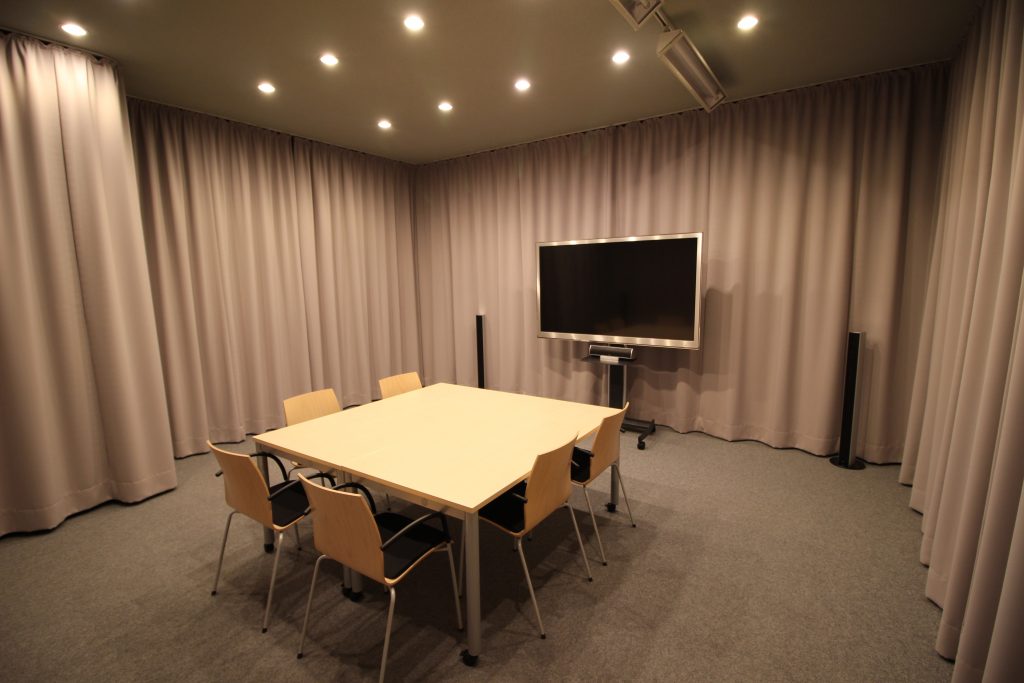
The Multimedia Room is used to evaluate and present works of the chair. Furthermore the room is used to record and display video and audio signals in a reproducible way. The rooms furniture and color scheme meets the required standards to be used for subjective quality assessment of image and video data and the noise and reverberation was minimized with great care.
Low Reverberation Room
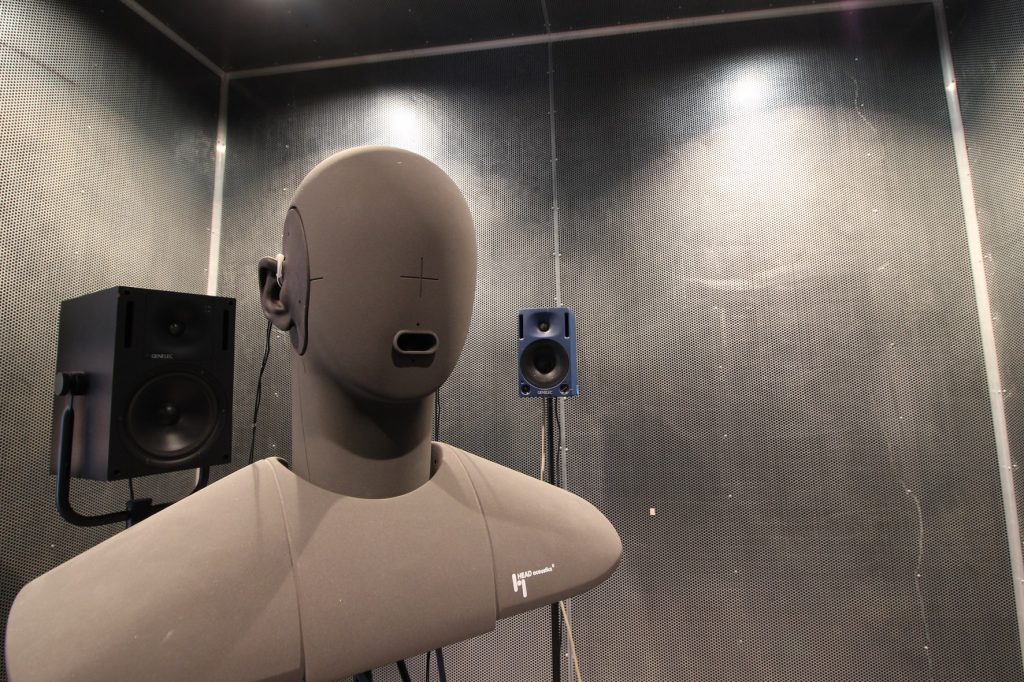
The chair has a special room with low reverberation. It has an inside floor space of 2.6 x 2.7 m and a height of 2.37 m. The reverberation time T60 is only about 50 ms, which makes it possible to measure the directionality of microphones and loudspeakers, as well as head related transfer functions (HRTFs). For example the room was used to measures the HRTFs of a dummy head and a humanoid robot. Using that information, it was possible to take individual properties into account when designing algorithms for digital hearing aids and a robot audition.
Acoustic Lab
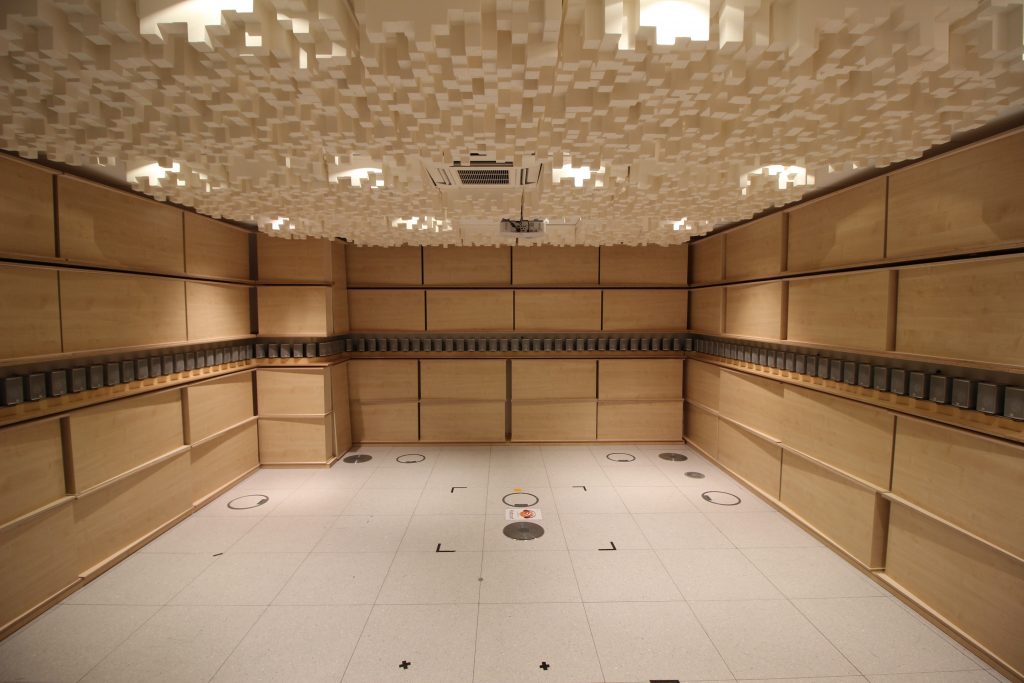
Speech and audio processing algorithms need to be evaluated under real acoustic conditions. This plays a major role on development of such algorithms. There the LMS owns – additionally to the low reverberation room – a acoustic lab which was completed in 2012. The acoustic lab can be used for acoustic measurements, algorithm evaluations as well as demonstrations.
A special property of this room, which has a size of 6,3 m x 4,9 m x 2,6 m, is that the acoustic properties can be adjusted reproducibly. We can achieve reverberation times of 0.1 to 0.7 seconds. This is made possible by up to 80 absorber boxes on the wall as well as different kinds of roof panels (plasterboard panels or so called Skyline Elements), which influence the reverberation time.
There are 128 speakers installed on the walls which can be used for wave-field-synthesis.
Student Lab Room
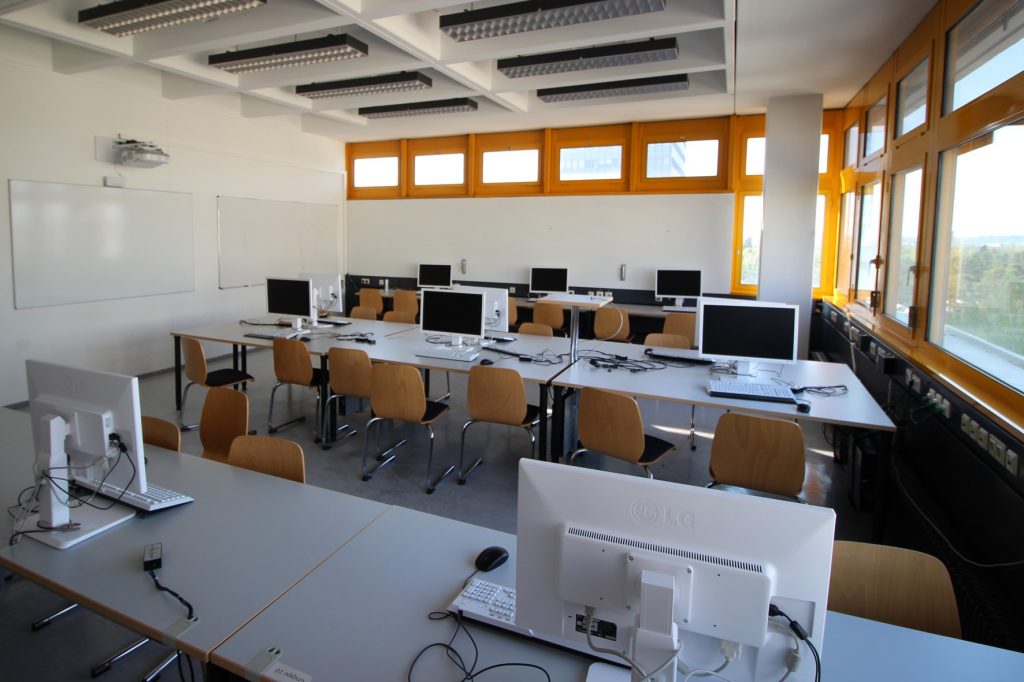
Practical application of the theoretical knowledge gained in lectures is crucial in the education of students. To that end, many of the the chair’s lectures are supplemented and extended by lab exercises and lab courses, respectively. To be able to hold these classes directly at the chair, the LMS has a big lab room suitable for up to 45 students. The room is furnished ergonomically, and has – next to the common equipment – a modern interactive whiteboard, which opens doors for new didactic possibilities.
Computer Cluster
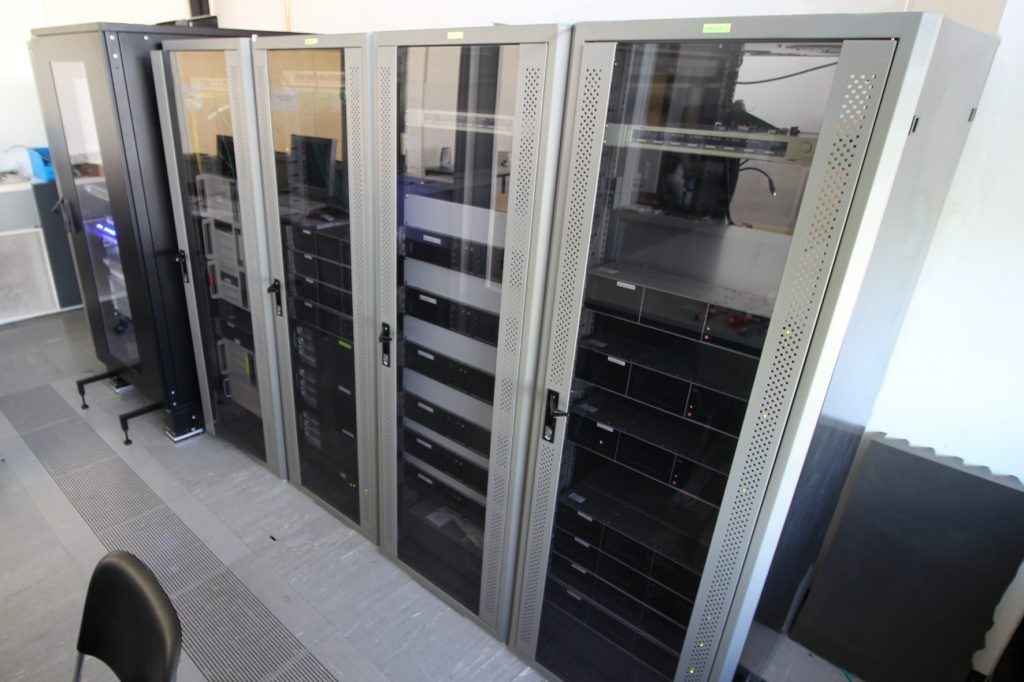
Developing and researching new algorithms for multimedia signal processing often requires a high amount of very complex simulations, which need a high amount of computational power. Often it is no longer possible to run such simulations on a workplace PC. Therefore the researchers and students have access to a computer cluster, which is maintained by the laboratories for communication technology. Currently the cluster has a capacity of about 15 TeraFLOPS distributed on 552 CPU-cores.
Selection of Specialized Equipment
Parallel Computer
Often, increased computational capacity can be achieved by the use of multiple processing cores. However, such parallel data processing often produces new challenges to the underlying signal processing algorithms. To develop and test such algorithms, which allow multi-core processing, the chair owns multiple computers which are specially designed for parallel computing.
GPU-Workstation
For many fields of image processing (e.g. face recognition) and acoustical signal processing (e.g. speech recognition), there exist complex algorithms which are highly parallelizable and can be run on graphics processing units (GPUs). For that reason, the chair has a total of three work stations for the use of GPUs.
Autostereoscopic 3D-Display with 8-Camera-Array
Since 2009, LMS owns an autostereocopic 42” HD display by the company Alioscopy. The display has a resolution of 1920 x 1080 pixels and supports a total of 8 different views of a scene. The different perspectives are algorithmically combined to one picture and displayed. Displaying those eight views simultaneously generates a 3D impression for the viewer. In contrast to other 3D displays, the autostereoscopic technology does not require the viewer to use additional equipment, such as corresponding 3D glasses.
Dummy Head Measurement System
The surface and contours of the human head and shoulders have a crucial influence on the auditory impression. To analyze and simulate these impacts in real life applications, the chair owns a special dummy head measurement system by the company HEAD acoustics GmbH since 2009. It simultaneously serves as recording system and speech simulation system. Therefore it is suitable for measurements of communication devices, like hand held devices (mobile phones), as well as hearing aids or hand free systems, which can be controlled by voice commands played by the dummy head. Additionally, the dummy head can be used to measure head related transfer functions in the low reverberation room, which have to be considered e.g. when designing digital hearing aids.
Eigenmike
Since spring 2009, the chair owns a so-called Eigenmike by the company MH-Acoustics. This microphone array consists of 32 microphones, distributed on the surface of a reverberant sphere, a interface unit and a dedicated Mac-Book. With this system, different spatial measurements and recordings can be performed. With the supplied software, it is possible to digitally recreate different spatial directional characterisitics.
NAO Roboter
Since February 2014 the chair owns a NAO robot by the manufacturer Aldebaran Robitics, which was bought in the context of the Embodied Audition for Robots (EARS) project, aided by the EU. This humaoid robot is 57 centimeters tall and has a shoulder width of 20 cm. The standard head has 4 built-in microphones and 2 cameras. This head can be exchanged with a prototype head, developed as part of the EARS project. This head contains 12 microphones and a pair of stereo cameras.
